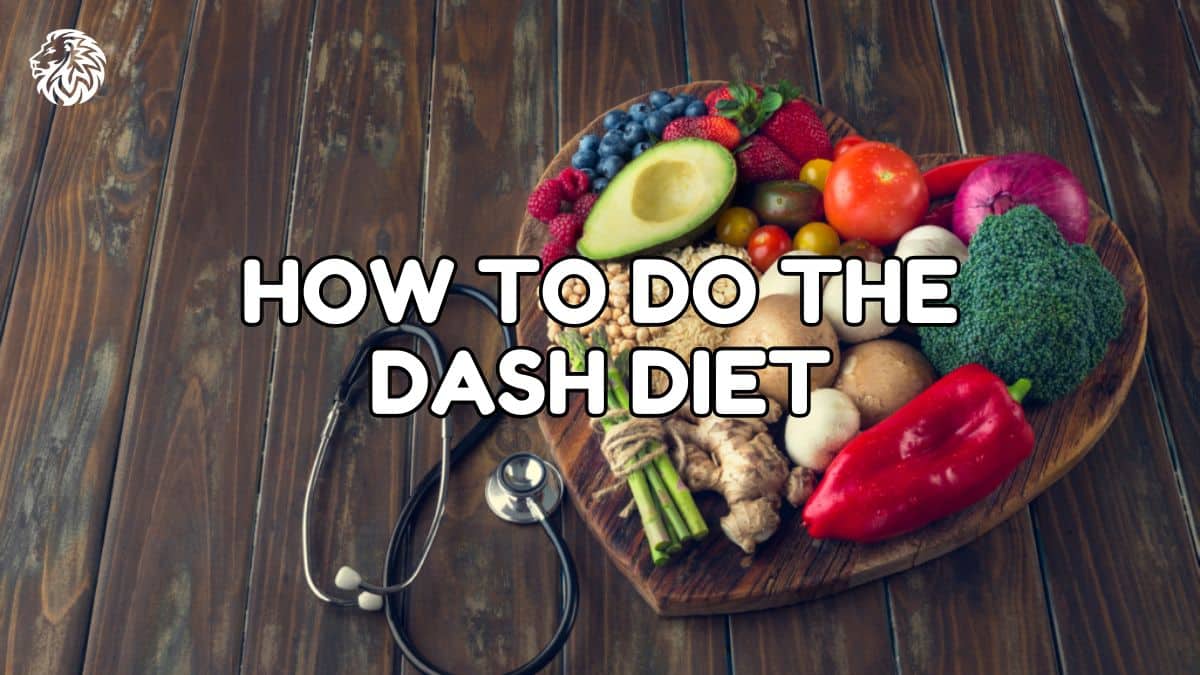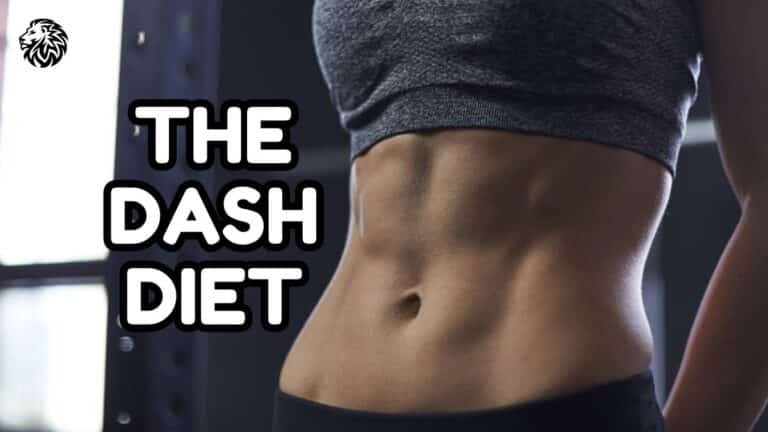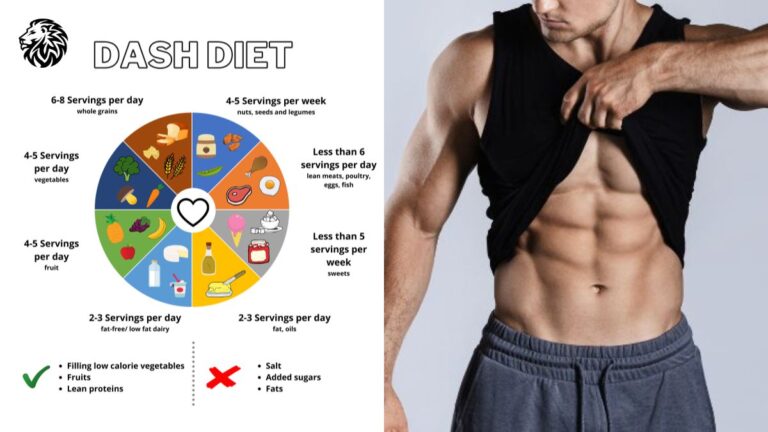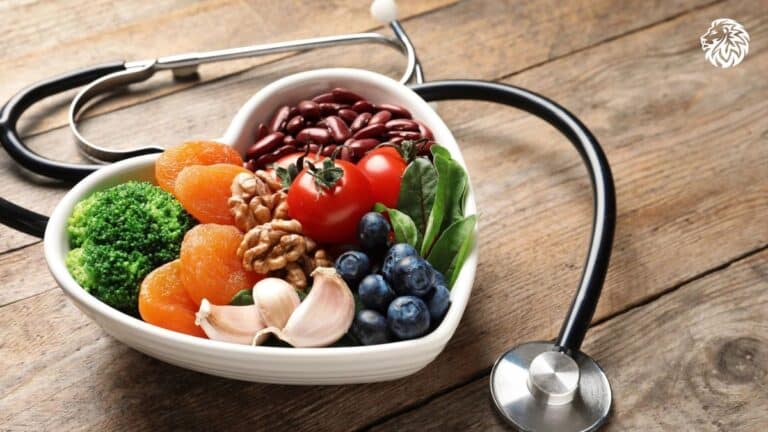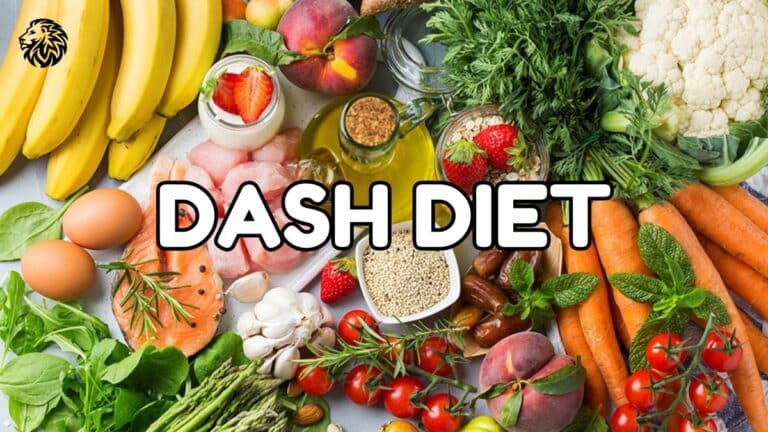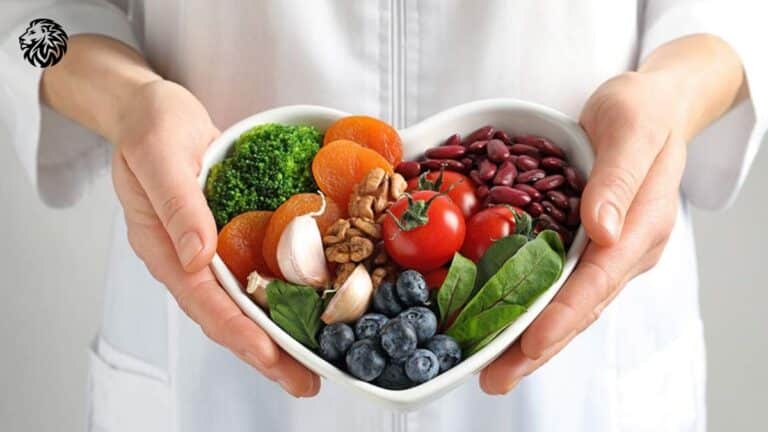The DASH diet, or Dietary Approaches to Stop Hypertension, has gained popularity for its ability to improve heart health, manage blood pressure, and promote overall well-being. Unlike restrictive diets, the DASH diet encourages a balanced approach to eating by focusing on nutrient-rich foods that provide essential vitamins and minerals. Whether you’re looking to lower blood pressure, manage cholesterol, or adopt a healthier eating routine, following the DASH diet is straightforward and accessible.
Here’s a comprehensive guide to help you get started with the DASH diet and make it part of your daily life.
1. Understanding the Core Principles of the DASH Diet
The DASH diet is structured around a few key principles designed to support heart health, reduce blood pressure, and improve overall nutrition. Here’s a more detailed look at these core principles:
1.1 Low Sodium Intake
The DASH diet prioritizes reducing sodium intake, which is critical for managing blood pressure. Sodium causes the body to retain water, which increases blood volume and, in turn, raises blood pressure. Reducing sodium helps alleviate this pressure, promoting cardiovascular health.
There are two sodium intake levels recommended by the DASH diet:
- Standard DASH Diet: This version allows for up to 2,300 mg of sodium per day, which is still lower than the typical sodium intake for many people.
- Lower Sodium DASH Diet: For those needing to manage hypertension more aggressively, the lower version suggests a daily sodium intake of 1,500 mg.
To put this into perspective, 2,300 mg of sodium is about one teaspoon of salt per day. However, the sodium content in processed and packaged foods can easily exceed this limit, so reading labels and opting for fresh, whole foods becomes essential.
Tips for reducing sodium intake:
- Choose fresh ingredients over pre-packaged or processed foods.
- Look for “low-sodium” or “no added salt” versions of your favorite items.
- Avoid adding table salt to meals and rely on herbs and spices for flavor.
1.2 High Intake of Fruits and Vegetables
Fruits and vegetables are rich in nutrients like potassium, magnesium, and fiber—key players in controlling blood pressure. Potassium helps balance out the negative effects of sodium, while magnesium aids in regulating blood flow and muscle function.
The DASH diet recommends 4 to 5 servings each of fruits and vegetables per day, which can look like:
- A medium apple or banana
- ½ cup of cooked vegetables like broccoli or carrots
- 1 cup of leafy greens such as spinach or kale
Why focus on fruits and vegetables:
- Potassium: Acts as a counterbalance to sodium, reducing its impact on blood pressure.
- Fiber: Supports healthy digestion and can help with weight management by promoting a feeling of fullness.
- Antioxidants: Found in colorful fruits and vegetables, antioxidants help protect cells from damage and support overall health.
Incorporating more fruits and vegetables into your meals is relatively easy. You can add fresh fruit to your breakfast cereal, pack raw veggies for snacks, and serve salads or steamed vegetables with your main meals.
1.3 Emphasis on Whole Grains
Whole grains are another cornerstone of the DASH diet. Unlike refined grains, whole grains retain the bran and germ, which contain essential nutrients like fiber, B vitamins, and minerals.
Whole grains help with:
- Digestive Health: The fiber in whole grains keeps your digestive system running smoothly.
- Blood Sugar Control: Because they break down more slowly than refined grains, whole grains help prevent spikes in blood sugar, which is important for maintaining energy levels and reducing the risk of type 2 diabetes.
- Heart Health: Whole grains have been shown to lower cholesterol levels and reduce the risk of heart disease.
The DASH diet recommends 6 to 8 servings of grains per day, with an emphasis on whole grains. This might include:
- 1 slice of whole-grain bread
- ½ cup of cooked brown rice, quinoa, or oatmeal
- 1 ounce of whole-grain cereal
To incorporate more whole grains, replace white bread with whole-grain varieties, opt for brown rice over white rice, and switch to whole-wheat pasta.
1.4 Lean Proteins
Protein is a vital part of any balanced diet, and the DASH diet emphasizes lean sources of protein. This includes skinless poultry, fish, and plant-based proteins such as beans, legumes, and nuts. Lean proteins are lower in unhealthy fats while still providing essential nutrients like iron, zinc, and B vitamins.
The DASH diet recommends 2 or fewer servings of lean meat, poultry, or fish per day. A serving might look like:
- 3 ounces of cooked chicken or turkey (about the size of a deck of cards)
- A 4-ounce serving of grilled fish like salmon or tilapia
The diet also encourages the inclusion of plant-based proteins, which are rich in fiber and healthy fats. Aim for 4 to 5 servings of legumes, nuts, and seeds per week. This can include:
- ½ cup of cooked beans or lentils
- A handful (about 1 ounce) of unsalted nuts like almonds or walnuts
By incorporating more plant-based proteins, you can reduce your intake of saturated fats, which are found in red meats and processed meats, and promote better heart health.
1.5 Low-Fat Dairy
Dairy products are a good source of calcium, vitamin D, and protein, which are important for bone health and muscle function. The DASH diet recommends 2 to 3 servings of low-fat or fat-free dairy per day. Examples include:
- 1 cup of low-fat or fat-free milk
- 1 cup of low-fat yogurt
- 1 ounce of cheese
The focus is on low-fat or fat-free options to reduce the intake of saturated fats, which can raise cholesterol levels. If you’re lactose intolerant or prefer non-dairy options, look for fortified alternatives such as almond milk or soy milk that offer similar nutritional benefits.
1.6 Healthy Fats
Although the DASH diet limits unhealthy fats, it encourages moderate consumption of heart-healthy fats like those found in olive oil, avocado, nuts, and seeds. These fats, particularly monounsaturated and polyunsaturated fats, help reduce LDL (“bad”) cholesterol and support overall heart health.
The DASH diet allows for 2 to 3 servings of fats and oils per day. A serving can include:
- 1 tablespoon of olive oil
- 1 tablespoon of avocado
- A small handful of unsalted nuts
It’s important to avoid trans fats and limit saturated fats found in butter, fatty meats, and full-fat dairy products. Replacing these with healthier fats can improve cholesterol levels and lower the risk of heart disease.
By focusing on these core principles—limiting sodium, increasing fruits and vegetables, incorporating whole grains, choosing lean proteins, including low-fat dairy, and opting for healthy fats—the DASH diet provides a comprehensive and balanced approach to nutrition. It’s designed to be flexible and adaptable, allowing you to make sustainable changes to your diet that improve your health in the long term.
2. How to Structure Your Meals
When structuring your meals on the DASH diet, aim for balance. Each meal should include a variety of food groups while keeping portion sizes in check. Here’s how a typical day on the DASH diet might look:
Breakfast
Start the day with a nutrient-dense meal that includes fiber and protein. Here’s an example:
- Oatmeal with fresh fruit, such as bananas or berries, and a sprinkle of nuts for added texture.
- A serving of low-fat yogurt or a glass of low-fat milk.
- A slice of whole grain toast with a small amount of peanut butter or almond butter.
This type of breakfast provides a good balance of carbohydrates, fiber, and protein, helping you stay full until your next meal.
Lunch
Your lunch should be a combination of vegetables, lean protein, and whole grains. Consider something like:
- A quinoa salad with mixed greens, tomatoes, cucumbers, chickpeas, and grilled chicken. Drizzle with olive oil and lemon juice for flavor.
- A side of fruit, such as an apple or a handful of grapes.
- A serving of low-fat cottage cheese or low-fat yogurt for extra protein.
This meal is rich in nutrients and keeps sodium levels in check, especially if you’re preparing the meal at home.
Dinner
For dinner, aim for a filling but light combination of lean protein, vegetables, and healthy fats. An example:
- Grilled salmon with a side of roasted Brussels sprouts and sweet potatoes.
- A mixed green salad with a variety of vegetables and a light vinaigrette made from olive oil and vinegar.
- Brown rice or another whole grain to round out the meal.
This meal is packed with omega-3 fatty acids from the salmon, fiber from the vegetables, and complex carbs from the brown rice.
Snacks
Between meals, it’s important to have healthy snacks that fit the DASH diet guidelines. Options include:
- Fresh fruit like apple slices with a tablespoon of peanut butter.
- A small handful of unsalted almonds or walnuts.
- A serving of low-fat yogurt with a sprinkle of chia seeds or granola.
Snacking on these options will help keep you satisfied throughout the day and prevent overeating during meals.
3. How to Monitor Your Sodium Intake
One of the most important aspects of the DASH diet is reducing sodium intake, as too much salt can contribute to high blood pressure. Here are a few tips to keep your sodium consumption in check:
- Read Food Labels: Many packaged and processed foods are high in sodium. Always check nutrition labels for sodium content, aiming for foods that have 5% or less of the daily recommended value of sodium.
- Use Herbs and Spices: Instead of reaching for the salt shaker, season your meals with herbs, spices, and citrus. Garlic, oregano, paprika, and lemon zest add a lot of flavor without adding sodium.
- Limit Processed Foods: Foods like canned soups, frozen dinners, deli meats, and snack foods are typically loaded with sodium. Try to prepare meals at home with fresh ingredients to have better control over your salt intake.
4. What to Avoid on the DASH Diet
While the DASH diet doesn’t completely forbid any foods, certain items should be limited:
- Sugary Beverages: Soft drinks, energy drinks, and even fruit juices with added sugar are best avoided. Opt for water, unsweetened herbal tea, or sparkling water instead.
- Sweets and Desserts: Foods high in added sugars, such as cakes, cookies, and candies, should be limited to occasional treats. When you do indulge, try to choose smaller portions or low-sugar alternatives.
- Red Meat: While not entirely off-limits, red meat is high in saturated fats, which can raise cholesterol levels. Instead, opt for lean cuts and consume them in moderation.
- High-Sodium Processed Foods: As mentioned earlier, processed foods are often loaded with sodium. Chips, frozen meals, and canned goods should be consumed sparingly or replaced with fresh, home-cooked options.
5. How to Stay Consistent on the DASH Diet
Starting a new eating plan can be challenging, but with a few strategies, you can stick to the DASH diet and reap its health benefits over the long term:
- Plan Ahead: Create a meal plan for the week and do your grocery shopping based on that plan. This helps you avoid impulse purchases and ensures you have all the ingredients you need for DASH-friendly meals.
- Meal Prep: Preparing meals in advance can save time during busy weekdays and keep you on track with the DASH diet. Cook larger portions of grains, proteins, and vegetables, and store them in containers for easy access throughout the week.
- Stay Hydrated: Drinking plenty of water is key to overall health and can help reduce cravings for sugary or salty snacks. Aim for at least 8 cups of water a day.
- Track Your Progress: Whether it’s writing down your meals in a food journal or using an app to track your sodium intake, monitoring your eating habits can help you stay accountable and make necessary adjustments along the way.
6. The Benefits of the DASH Diet
By following the DASH diet, you can expect to experience several health benefits:
- Lower Blood Pressure: The primary benefit of the DASH diet is its ability to reduce hypertension. By cutting back on sodium and increasing intake of potassium, magnesium, and calcium, many people see a significant drop in their blood pressure levels.
- Weight Management: Because the diet focuses on whole foods and healthy portions, it can naturally help you manage your weight. Many find that they lose weight over time, especially when pairing the diet with regular physical activity.
- Improved Heart Health: The DASH diet is designed to promote heart health by reducing risk factors like high cholesterol and high blood pressure. It’s an effective way to lower your chances of heart disease and stroke.
Final Thoughts
The DASH diet offers a balanced, flexible approach to eating that can lead to long-term health benefits. By focusing on nutrient-rich foods and reducing sodium, you can manage your blood pressure and improve your overall well-being. Whether you’re cooking at home, dining out, or preparing snacks, sticking to these principles will help you stay on track.
References
- Mayo Clinic Staff. (n.d.). DASH diet: Guide to recommended servings. Mayo Clinic. Retrieved October 11, 2024, from https://www.mayoclinic.org/healthy-lifestyle/nutrition-and-healthy-eating/in-depth/dash-diet/art-20050989
- Heart and Stroke Foundation of Canada. (n.d.). DASH diet: Healthy eating guide. https://www.heartandstroke.ca/healthy-living/healthy-eating/dash-diet
- MedlinePlus. (2022). DASH diet: Instructions for patients. https://medlineplus.gov/ency/patientinstructions/000784.htm
- National Heart, Lung, and Blood Institute. (n.d.). DASH research. U.S. Department of Health and Human Services. https://www.nhlbi.nih.gov/education/dash/research
- Mayo Clinic. (2022). DASH diet: Healthy eating to lower your blood pressure. https://www.mayoclinic.org/healthy-lifestyle/nutrition-and-healthy-eating/in-depth/dash-diet/art-20047110
- WebMD. (2023). The DASH diet for high blood pressure. https://www.webmd.com/hypertension-high-blood-pressure/dash-diet
- Health US News. (n.d.). Best diets: DASH diet review. https://health.usnews.com/best-diet/dash-diet
